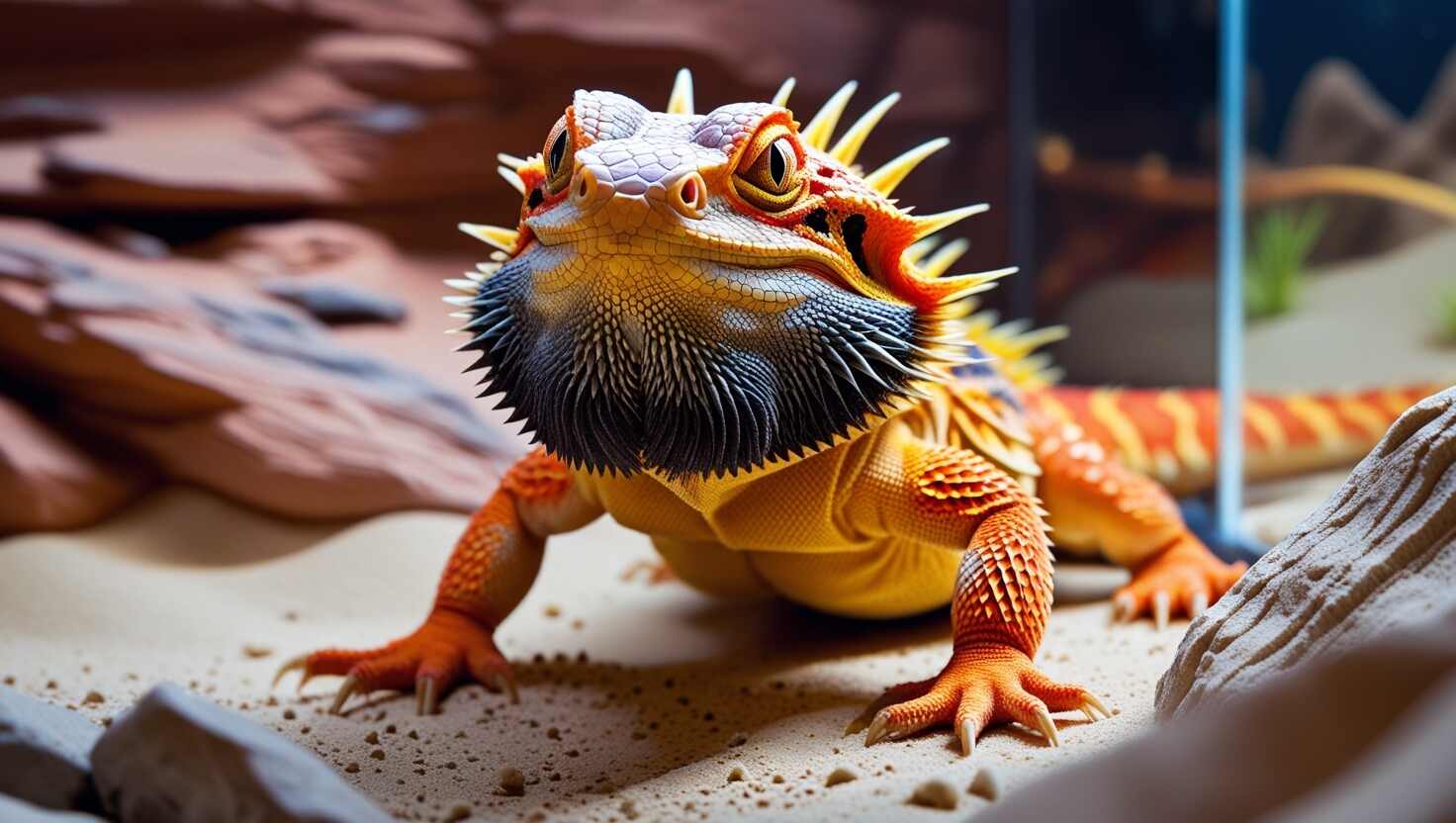Bearded Dragon Morphs and Colors
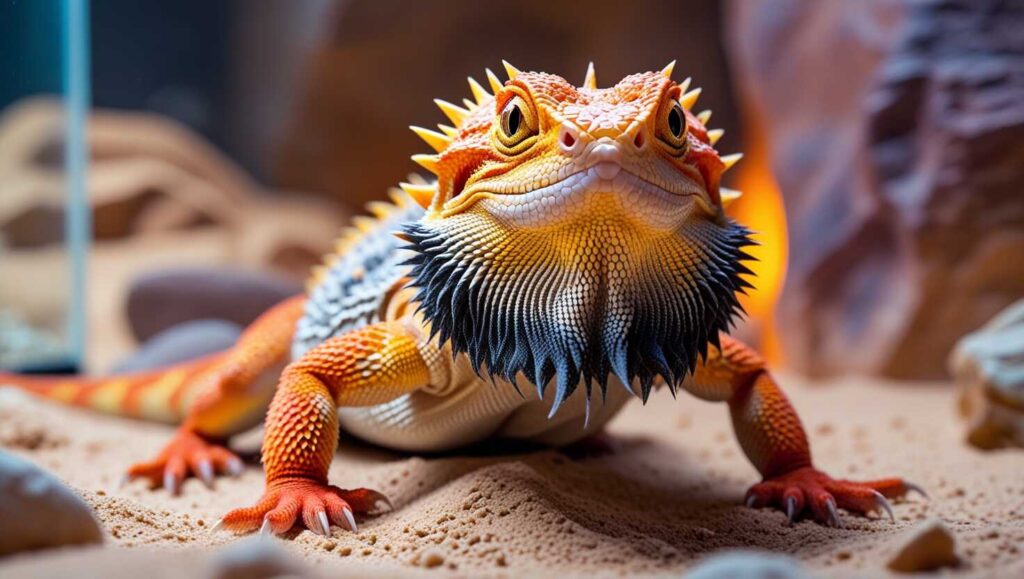
Bearded dragon morphs vary in color, pattern, and size, giving them a distinct appearance. Some have scales with brown spots, while others feature tiger stripes in either horizontal or vertical direction. Their physical characteristics, like spikes and scaling, are part of what signifies these visual attributes. Each morph is referred to by its overall hues and design, reflecting unique saturation and hue combinations.
In terms of scaling morphs, the look and physical morph can be quite straightforward yet technically fascinating. The visual design often refers to subtle changes in coloration and attributes. A closer glance reveals how the scales enhance their appearance, with some dragons displaying minimal patterns while others are richly designed with complex designs.
Bearded Dragon Colors
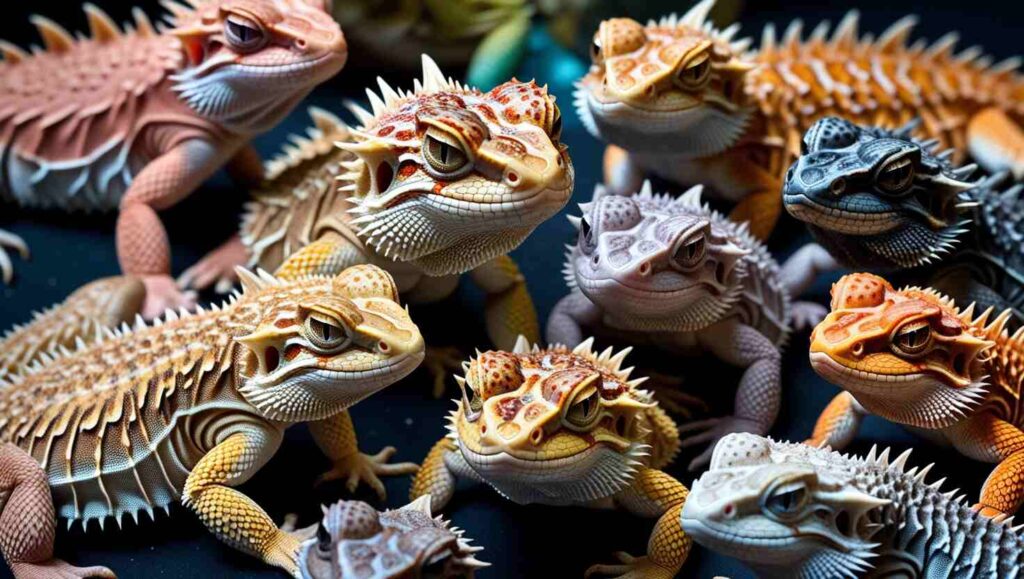
The bearded dragon, scientifically called Pogona vitticeps, is native to Central Australia, where its natural habitat includes sandy areas and red soil landscapes. In nature, they are often seen in shades of grey, brown, and yellow, blending well with their environment. Their spine and back can have patterns of vertical and horizontal stripes that provide natural camouflage.
Through selective breeding, breeders have developed unique and beautiful colors not found in the wild. Citrus morphs display vibrant yellow, while orange and even white dragons have emerged through careful pairing across generations. These mutations enhance the visual traits, producing gorgeous and rare appearances that are highly valued.
The Australian Museum has documented various bright and colored morphs created in captivity. A specific focus on captive morphs has led to dragons with common bases yet striking patterns on their spine and sides. These fascinating creatures have become favorites among breeders for their ever-evolving beauty.
Common Bearded Dragon Colors
In the wild, bearded dragons have natural hues like brown and gray, which help them blend with their surroundings to stay safe from predators. These common colors are often seen in their central and eastern counterparts. Some dragons may show hints of dull yellow or pale tones under sunlight.
In captivity, breeding efforts by breeders have produced morphs with bright and vibrant colors. Red, orange, and fiery yellow are popular choices in many pet stores. These colors give them a striking look, almost like they reflect a ray of sunshine, making them more appealing than their wild relatives.
Rare Bearded Dragon Colors & Patterns
Some rare bearded dragons exhibit unique patterns and coloring. Blue Bars appear as vertical or horizontal stripes, though they often fade as the dragon ages. These dragons may also show silver, purple, or even translucent tones, which are much less common in the natural world.
Selective breeding has created rarer varieties, including fire-like engine red, lemon yellow, and light pink dragons. These brighter morphs are especially striking as young but may lose intensity as they grow. The product of generations of work, they remain highly sought after by enthusiasts.
Dragons with splotches or uncommon blue hints are a true marvel. Some morphs that are vivid as juveniles become softer or duller in color as adults. However, those with stable patterns continue to draw attention for their beautiful and unique looks.
Different Colors of Bearded Dragons
Some bearded dragon colors are common and found everywhere, while others are rarer, created by breeders for specific looks. These amazing creatures offer gorgeous and beautiful options to choose from.
Bearded Dragon Morphs
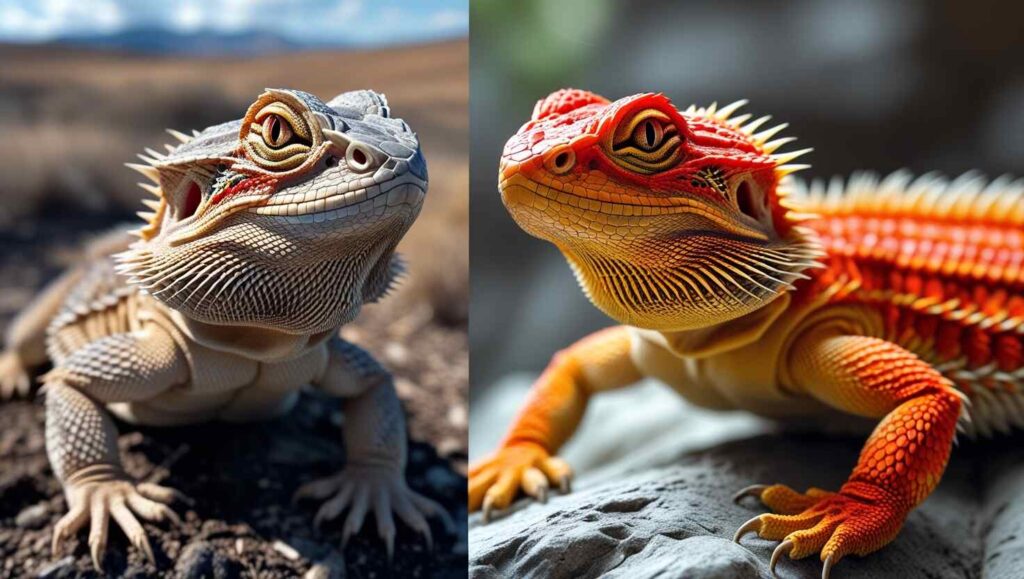
Common Morphs
Classic or Standard Morph
The classic or standard bearded dragon morph closely resembles its wild counterpart. These dragons have triangular heads, a beard, rigid scales, and small spikes along their backs. Their appearance is usually tan with red, yellow, orange, or black markings.
This variety, part of the Australian genus, often features a horizontal pattern. Since it is the least expensive to purchase, it is one of the most commonly chosen options for new owners. Despite its basic look, this morph offers a natural charm at a reasonable cost.
German Giant Morph
The German Giant morph is a large bearded dragon, much bigger than the standard or classic type. A full-grown dragon can reach over 24 inches long, requiring a spacious enclosure to stay happy and healthy.
This uncommon and exotic pet is often bred by specialized breeders. It’s harder to find, but enthusiasts may request this morph for its impressive size and unique colors.
Leatherback Morph
The leatherback morph is a popular bearded dragon known for its smooth back and shorter spikes on the heads and sides. This type lacks the textured scaling seen in standard or normal dragons, giving it a sleek look.
This identifying trait enhances vivid, brighter colors by reducing patterns and muting details. Though not rare, it is a favored option due to the absence of rough leather-like scales. Some hypomelanistic morphs with vibrant tones further add to its appeal.
Dunner Morph
The Dunner morph is a distinctive bearded dragon morph created by a breeder. Unlike the classic type, its pattern is unorganized with scales, spots, and markings going in different directions, sometimes appearing almost patternless, instead of typical, symmetrical stripes.
This morph can be identified by its more pointed tail and uneven vertical or horizontal patterns across the stomach. The palette of colors often appears scattered, making it highly recognizable. As they grow, the organization of markings remains unpredictable compared to leatherback or other morphs.
Hypomelanistic Morph
The hypomelanistic morph, often called hypo, is a bearded dragon with below-normal melanin levels. This gene results in muted colors and a pale or pastel appearance. Dark patterns are faded, and their nails are often clear instead of black.
This morph is highly sought after for its visual beauty. Variations like hypo zeros, trans, or Fancy dragons may show white, silver, or paper-like gray coloration. These dragons are popular in pet stores and have clearer skin on their body and spikes, enhancing their light-toned charm.
Translucent Morph
The translucent morph is a unique bearded dragon with a partially see-through appearance. Their scales and spikes can have a gummy texture, while blue tones are visible on a clear belly, especially in baby dragons.
Unlike adults, younger trans dragons may have dark eyes with an unclear iris and eyelids that appear almost invisible. This mutation, created through captive breeding over decades, sets apart this morph from others. Their lighter color and cool look, often guessed to resemble a leopard gecko, make them highly appealing to enthusiasts.
Rare Morphs
Silkback Morph
The silkback morph is a unique bearded dragon known for its smooth skin, completely lacking spikes and scales. This gives it vibrant colors and uninterrupted patterns, making the creatures look special and beautiful.
However, silkies require extra care due to their soft and delicate skin, which may lead to some controversy among breeders. Despite concerns about impeding their protection, these morphs are admired for their cohesive look, free from interrupt-ing scale patterns.
Witblits Morph
The Witblits morph is a bearded dragon with pale, muted colors and a complete lack of patterns. This solid-colored dragon is easily recognized for its washed-out look and reduced vibrancy.
Though similar to the zero and hypomelanistic types, Witblits dragons hold a clear visual difference. Crossbreeding may create wero dragons, combining features from both morphs for a unique color blend.
Wero Morph
The Wero morph is a combination of Witblits and zero morphs. This bearded dragon resembles the pattern-less look but may hold splotches of darker colors, especially near the tail, creating a subtle visual difference.
Zero Morph
The Zero morph is a rare bearded dragon with a self-explanatory patternless and almost colorless look. It has solid tones in white, silver, or gray, making it a distinctive morph in high demand.
This newer morph, often compared to albino, is gaining popularity in the reptile community. With its paper-white appearance, breeders may reserve part of a clutch for sale, as it has become a favorite among enthusiasts.
Paradox Morph
The Paradox morph is a uniquely patterned bearded dragon created through crossbreeding. This rare morph features random blotches and speckles of bright colors, as if paint was splattered across its body.
Unlike typical symmetrical patterns, Paradox dragons have an unpredictable combination of color that gives them a gorgeous and striking air. These creatures stand out with a mix of both vibrant and dull areas.
Special Patterns and Markings
Bearded Dragon Blue Bars
Blue Bars are a newly emerging pattern in some bearded dragons, often appearing as bright or dark blue bars along their sides. These horizontal or vertical striped markings are more common in dunner and trans beardies.
This trait acts as a secondary color that breeders have bred over generations. Dragons displaying these Blue Bars create a bold contrast, increasing their popularity among reptile enthusiasts.
Bearded Dragon Genetic Stripes
The genetic stripes bearded dragon has unbroken, vertical stripes running down its back. This pattern follows a single line along the spine, creating a regular and striking color feature.
Visual Morphs
Visual morphs are popular in beardies, with mutations like hypo, trans, zero, witblit, and wero. These morphs are defined by visually distinct traits that display on the dragon’s body.
Some morphs are recessive, meaning both parents must carry the gene. Dragons that do not visibly show the mutation can be carriers, also called het or heterozygous, when describing their genetic makeup.
Bearded Dragon Patterns
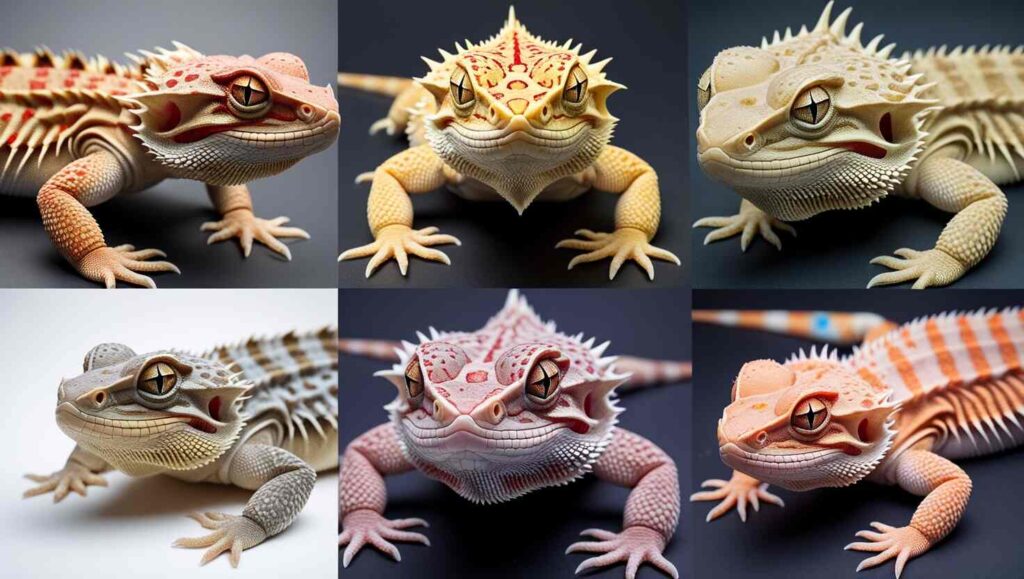
Types of Patterns
Patterns in bearded dragon morphs are defining elements when describing their appearance. Standard morphs have symmetrical stripes, either running horizontally along the back or vertically on the sides. Some dragons display spots, blotches, and variations in color as well.
Breeders, like those featured on the Bearded Dragon Lady blog, develop unique patterns through selective breeding. The Dunner morph has haphazard scales, while tiger morphs resemble a wild cat with bold dark markings. Dragons can grow with multiple pattern directions on their spikes and scales, making each dragon truly unique in opinion and designated by breeders.
Examples of Specific Morphs with Patterns
Certain morphs exhibit beautiful patterns and colors. The Paradox morph has random blue splatters across the back and sides, while Dunner dragons have distinct patterns running unevenly on their tail and body.
Morphs like hypo may show faded, washed orange tones due to a lack of pigment. Some dragons have a flat, leathery appearance, with gummy scales adding a unique visual texture. Others might appear nearly colorless with well-defined patterns.
Factors Influencing Bearded Dragon Color Changes
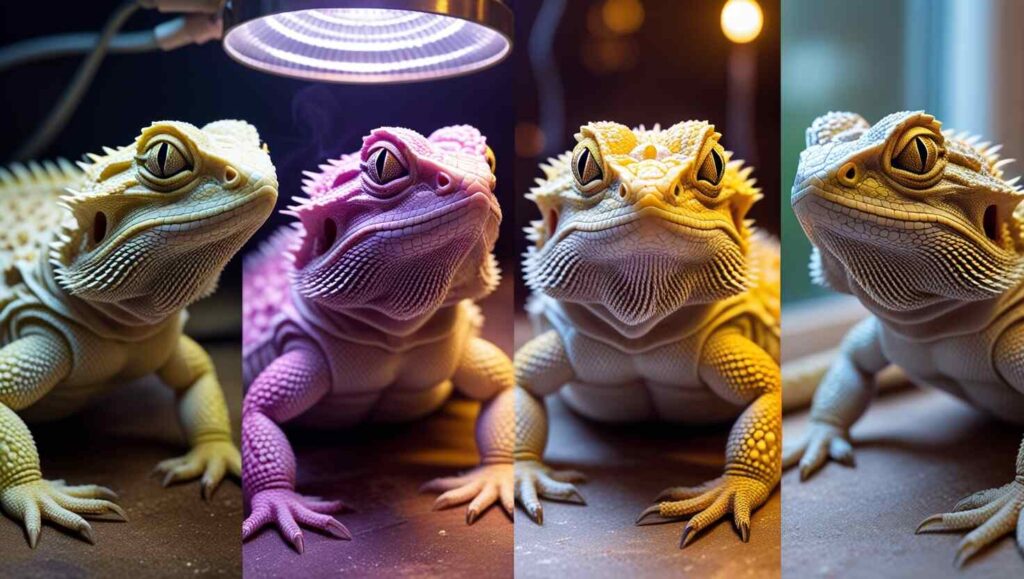
Changes Over Time
As a young bearded dragon grows, its morph may experience changes in color and patterns. Bright tones may fade into pale shades, while solid or distinct designs can dissipate over time.
For example, Dunner and Wero dragons often develop subtle changes, keeping breeders guessing. Even classic or German Giant morphs can appear more vibrant when young but look different once fully grown. These shifts depend on health, personality, and the reptile’s natural development. Owners may find it difficult to predict these transformations and are often surprised by them.
Reasons for Color Changes
Bearded dragons may show changing colors for various reasons:
- Circadian rhythms: When asleep or during cooler nights, their color can turn lighter as temperatures drop. In the morning, they absorb warmth from a heat lamp to become more awake and active.
- Temperature contrast: Cold or hot conditions can lead to different hues, helping regulate body heat.
Shedding also affects their hue:
- Shedding skin causes the dragon to look dull or drab due to new layers and pigments.
- As pigment cells renew, colors may become more vibrant.
Dragons may display black or red shades due to other reasons:
- Mood and emotions: Stress marks appear when they are stressed, while relaxed dragons may show lighter tones.
- Infections or injuries: Swollen, red, or discolored skin can indicate bacterial, fungal, or traumatic issues. Tail or toes with constriction require a vet’s attention.
Diet can influence color as well:
- Red-based diets like tomatoes and carrots can cause staining.
- Inadequate protein blends or digestive problems, such as blockage, may trigger stress responses. Consulting a veterinarian or telehealth appointment can prevent further problems.
Environmental Factors
When a person is purchasing a bearded dragon, it’s important to know that online sales can be misleading. For example, photos of dragons may be altered with Photoshop or saturation changes to enhance color. Lighting and lights can also create a difference in appearance, making buyers easily fooled by these alterations. Always confirm the dragon’s true colors in person to avoid surprises.
Genetics and Breeding in Bearded Dragons
Genetic Concepts
In the bearded dragon community, breeders focus on breeding for specific traits like Hypo and Classic. A Double Het dragon has two hidden genetic possibilities that can produce unique offspring. As a dragon grows, its colors may change, appearing duller or brighter than in photos. For example, a young Krull morph may start with white tones but later develop saturated orange hues. Properly identifying traits helps maintain desirable morphs in new babes without breaking the line’s quality.
Ethics and Breeding Practices
Some breeders focus on fancy morphs like the Blood Red Morph or Super Tiger Morph, often attaching high price tags and labels like “high-end” or special. However, certain morphs, such as silkie, are controversial due to genetic defects. Silkies lack scales, making their skin sensitive and prone to injury from sharp objects and stuck shed on toes or tail, which diminishes their quality of life.
Breeders have a special responsibility to ensure healthy dragons. Unlike adjective-filled describing phrases often used in marketing, legitimate breeding should prioritize the reptile’s well-being. Here B Dragons, for example, promotes ethical breeding of related species like Rankin’s and Lawson’s dragons, avoiding practices that create special needs reptiles for profit. Regular baths and protective care are critical but don’t justify breeding practices that lead to suffering.
Bearded Dragon Care and Tips
When buying a bearded dragon, choose a reputable breeder familiar with the specifics of the species.
Avoid deceptive listings with overly vibrant colors caused by light manipulation. Use a buyer-beware approach to avoid spending money on unhealthy pets. Ask questions about the dragon’s personality, health, and care needs to ensure you’re making an informed decision.
Bearded dragons are sociable and intelligent reptiles.
- Their social signals include body color changes like yellow, orange, or red for happiness and black for stress or health issues.
- Stable living space, warmth, and regular routine keep them relaxed and healthy.
Proper food and care are essential for their well-being.
- These special pets need playtime, such as holding or even a walk on a leash.
- Bearded dragons can communicate through behavior and color changes, making them charming companions for owners.
Special Features of Bearded Dragons
Bearded dragons have a spine-covered beard, a pouch under the chin that inflates and darkens.
- This expressive feature helps them signal fear, anger, or stress.
- The beard acts as a barometer of mental and physical health.
- Darkened or blackened spots on the torso or tail may indicate that the dragon is sick, fearful, or needs a veterinarian.
Their body camouflages with dusty browns, muted oranges, soft yellows, and rusty reds, though they may also show rich blacks.
- Changes in hues reflect mood or environmental factors.
- A puffed beard may indicate an off-balance emotional or physical state.
Environment and routine are crucial for their care.
- Keep the terrarium warm with a functioning heat bulb to avoid chilly conditions that cause lethargic behavior.
- Ensure the enclosure is cozy but not cramped for safe living quarters.
Regular playtime, feeding, and handling routines eliminate stress.
- Stressed dragons may stop eating or display defensive behaviors like expanded beards.
- Proper guidance keeps them calm, relaxed, and healthy.
Kindly note: The content shared in this blog is gathered from online sources, some of which may not be verified. For accurate guidance on caring for your Bearded dragons, it is recommended to seek advice from a qualified veterinarian.

